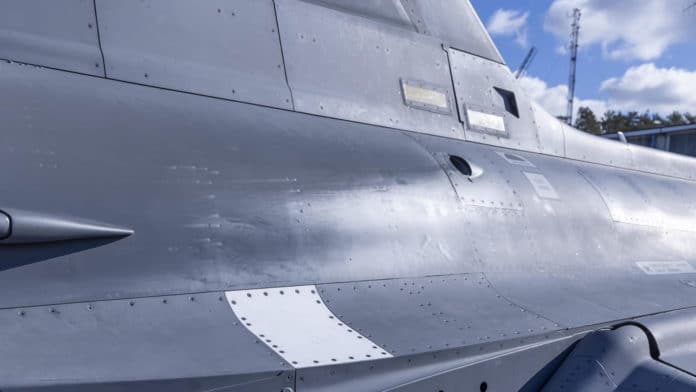Saab has successfully tested, for the first time, one of its Gripen aircraft with an exterior 3D-printed part, rather than internal 3D-printed components. The purpose of the trial was to test how additive manufacturing could be used in battlefield damage repair.
The test flight took place in the skies above Saab’s facilities in Linköping, Sweden. Gripen was fitted with a replacement hatch that had been 3D-printed using additive manufacturing, using a nylon polymer called PA2200. Because there was no 3D computer model of the original hatch, it was first removed from the aircraft and put in a scanner. This process, in turn, enabled 3D printing of an exact copy, tailor-made to this individual aircraft.
The successful test is a step towards 3D-printed spares being used for rapid repairs to fighter aircraft that have sustained damage while deployed on remote operations, thereby gaining a vital time-saving advantage.
“Post-flight initial inspection of the hatch was very positive and showed no visual structural changes had occurred from the flight. The potential of this approach means that maintenance personnel in the field can get access to individually fitted spare parts, and you no longer have to resort to emergency fixes nor cannibalize other broken-down aircraft for their parts, while also further reducing the small number of parts brought on a deployment. This also reduces the operational time lost in repairs,” says Håkan Stake, contract manager for support to Gripen C/D and manager of the development project.
To achieve the goal of deploying this capability, further testing is required along with agreements on material standards.
“This test flight of a component with operational impact is an important step as an aircraft, including all its parts, always has to meet the tough requirements of an airworthiness process. In terms of increasing operational availability in the field, additive manufacturing will be a game-changer,” says Ellen Molin, senior vice president and head of Saab’s business area Support and Services.
The next stage of the project is search for an alternative material to the PA2200 that is not only flexible but also resistant to extremely low temperatures at high altitudes. At the same time, it also includes the development of equipment that allows 3D printing in extreme operating conditions.
